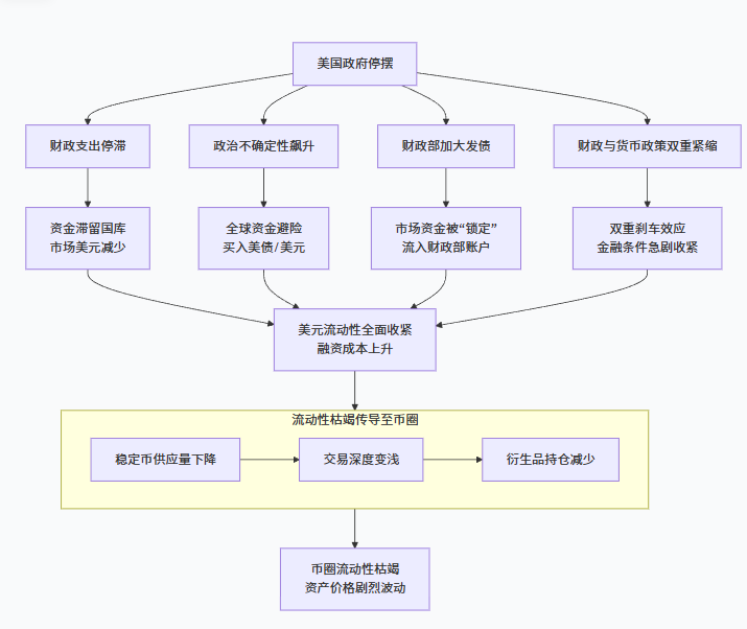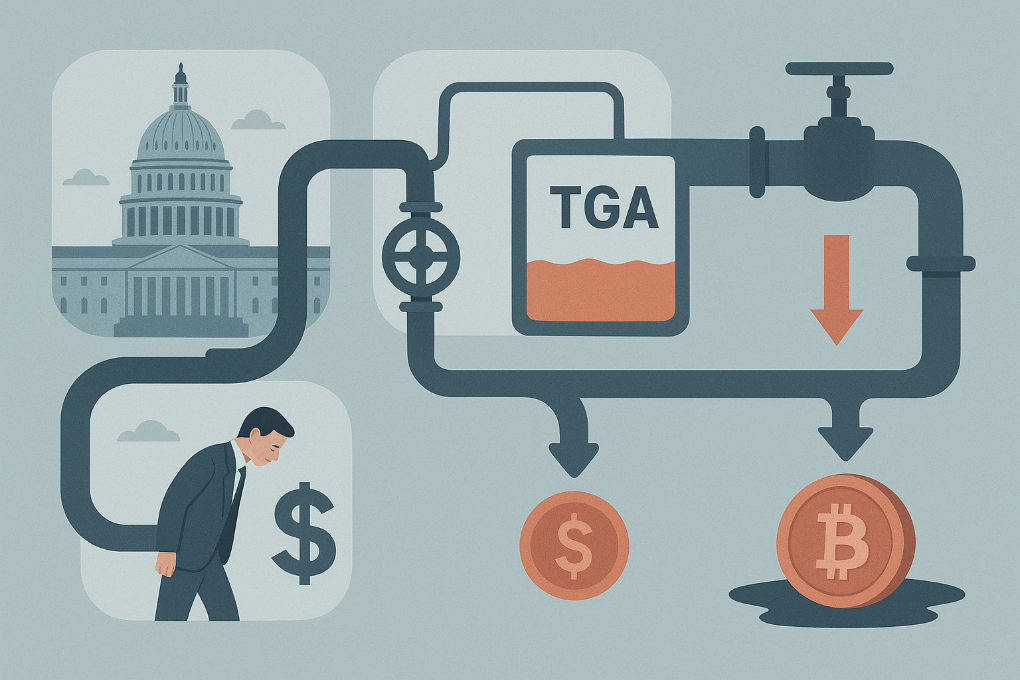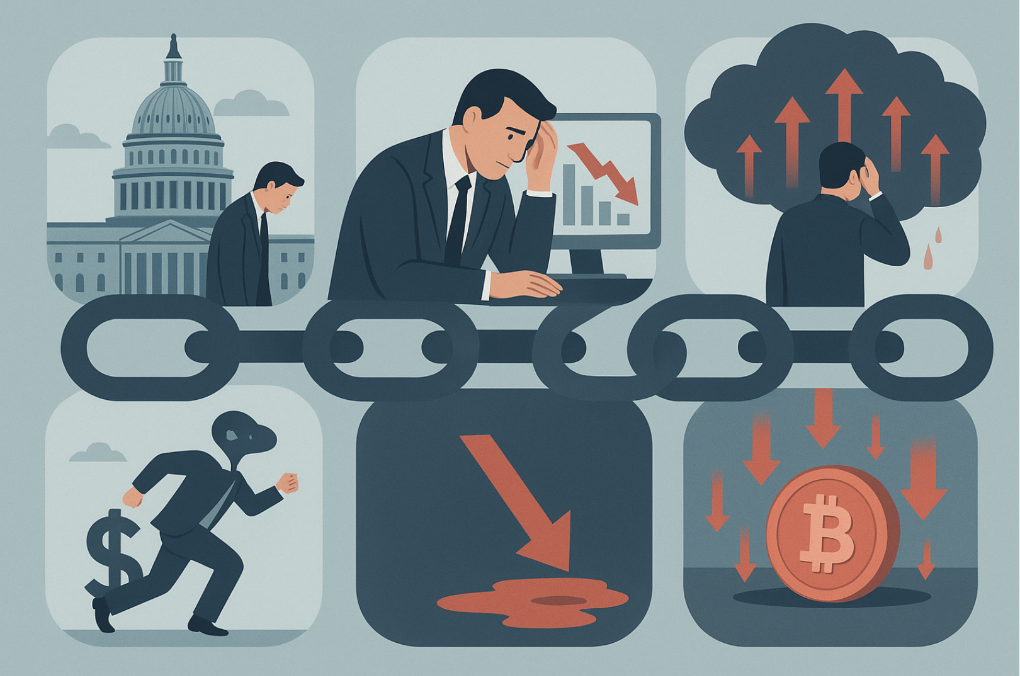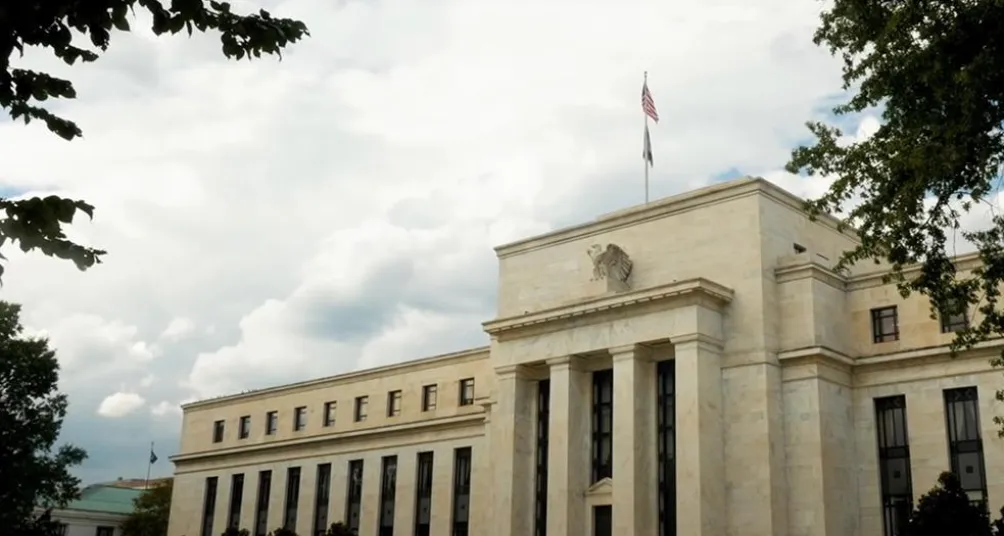The financial storm triggered by the political deadlock in Washington is precisely delivering a chill to every investor's account in the cryptocurrency market through two clear transmission chains.
On November 13, 2023, at 8 AM UTC+8, the 41-day crisis of the U.S. federal government shutdown is about to come to an end, as the Senate passed a compromise plan. This record-breaking shutdown not only affected millions of federal employees and government services but also caused significant impacts on the global cryptocurrency market through intricate financial chains.
During the shutdown, the U.S. Treasury's general account balance surged from about $300 billion to over $1 trillion, pulling massive liquidity out of the market. Meanwhile, the combination of an economic data black hole and policy uncertainty led to a sharp decline in global investors' risk appetite.

1. Root of the Shutdown: A Vicious Cycle of Political Games and Governance Failure
The current U.S. federal government shutdown began on October 1, 2025, triggered directly by severe disagreements between the Democratic and Republican parties over subsidies related to the Affordable Care Act.
● This shutdown exposed the deep-seated dilemmas within the U.S. political system. The Democrats demanded that healthcare subsidy issues be settled first, while the Republicans insisted on ending the shutdown before discussing healthcare matters, with both sides refusing to compromise.
● The temporary funding bill has evolved from a "stopgap measure" to a "normal operation." The Senate's "prolonged debate" procedural rules make it increasingly difficult to pass bills, allowing senators to delay or block votes on specific bills by extending debate.
● White House National Economic Council Director Hassett warned during the shutdown that if it continued, the fourth-quarter GDP could turn negative. U.S. Treasury Secretary Basent also acknowledged that the impact of the shutdown on the economy was becoming "increasingly dire."
2. Transmission Chain One: The Precise Strike of Liquidity Tightening
This chain describes the physical withdrawal of funds, centered on the TGA account established by the U.S. Treasury at the Federal Reserve. The entire process resembles a sophisticated financial pipeline system that withdraws liquidity from the market.
● Government shutdown → Fiscal cycle interruption → TGA balance surges → Dollar liquidity tightens → Market makers' financing costs rise → Cryptocurrency market liquidity dries up

Fiscal Cycle Interruption, TGA Becomes a "Financial Black Hole"
● Under normal conditions, the U.S. Treasury's funding cycle maintains a dynamic balance: funds are deposited into the TGA account through taxes and bond issuance, and then injected into the market through fiscal spending, forming a healthy liquidity cycle.
● The shutdown completely disrupted this balance. According to data released by the Treasury, U.S. fiscal revenue rose to $543.663 billion in September, while spending plummeted to $345.713 billion due to the government shutdown.
● The TGA account continuously absorbed funds due to tax revenue and bond issuance, while the fiscal spending segment came to a standstill, creating a massive liquidity situation of "only inflow, no outflow." This process caused the TGA balance to surge from about $300 billion to over $1 trillion, equivalent to withdrawing more than $700 billion in cash from the market.
Dollar Liquidity Tightens, Financing Costs Soar
● The "black hole effect" of the TGA directly triggered a dollar liquidity crisis within the financial system. The key benchmark for measuring interbank dollar financing costs—the secured overnight financing rate surged by 22 basis points on October 31, far exceeding the Federal Reserve's target interest rate range.
● At the same time, commercial banks' usage of the Federal Reserve's standing repo facility also significantly increased, nearing historical highs. This phenomenon clearly indicates a severe "dollar shortage" in the banking system, sharply raising short-term financing costs.
● Federal Reserve officials privately acknowledged that the tightening effect of the TGA surge is comparable to several interest rate hikes, completely offsetting the Fed's previous efforts to maintain market liquidity.
Pressure Directly Reaches the Heart of the Crypto World
The liquidity tightening in traditional financial markets directly impacts the cryptocurrency market through two key channels:
● Market makers are the first to be affected. Market makers and exchanges in the crypto market heavily rely on short-term financing from traditional financial markets to provide liquidity. When short-term rates like SOFR surge, the financing costs for market makers rise sharply, significantly compressing profit margins.
● A top market maker's risk control officer, who requested anonymity, revealed: “During the shutdown, our dollar financing costs increased by more than two times, forcing us to significantly reduce our market-making scale across major exchanges.” This directly led to an expansion of the bid-ask spread in the cryptocurrency market and worsened market depth.
● The reserve management of stablecoins also faces immense pressure. Most stablecoins use dollar assets (such as short-term government bonds) as reserves. When these highly liquid assets in traditional financial markets face trading difficulties, it directly affects the reserve asset management of stablecoin issuers. Data shows that the tightening dollar liquidity caused the over-the-counter premium of stablecoins to drop from +0.3% to -1.1%, indicating that the "pseudo shortage" of dollars has impacted the stablecoin market.
3. Transmission Chain Two: Psychological Impact of Risk Appetite Shift
This chain describes the reversal of market psychology and sentiment, driven primarily by uncertainty. When investors are engulfed in a fog of information, their behavior becomes conservative and cautious.
● Government shutdown → Absence of economic data + Policy uncertainty → Global risk aversion sentiment rises → Funds withdraw from risk assets → Cryptocurrency market faces sell-off → Liquidity spirals downwards

Economic Data "Black Hole" and Policy Uncertainty
● The government shutdown caused key statistical agencies like the U.S. Department of Labor and the Department of Commerce to cease operations, resulting in a complete halt of key official economic data such as CPI and non-farm payroll reports. The market lost its "eyes" to assess the health of the economy, leaving the Fed, investors, and businesses navigating in the fog.
● The chief economist at Morgan Stanley wrote in a report to clients: “Making economic decisions without data is like a blind person trying to feel an elephant; we advise clients to remain cautious until the situation clarifies.”
● This uncertainty was further amplified by Trump's tariff policies. The U.S. government announced tariffs on various imported goods, raising concerns about escalating global trade tensions. Meanwhile, geopolitical risks such as the Russia-Ukraine conflict and the Israel-Palestine conflict continued to fester, collectively pushing up the global market's fear index.
Global Risk Aversion Sentiment Rises and Capital Migration
● Faced with this "perfect storm," investors' risk aversion sentiment surged sharply. The Fear and Greed Index released by the University of Chicago once showed a reading of 23, clearly indicating that the market was in the "fear" zone.
● Cryptocurrencies are widely regarded as the "crown jewel of risk assets" in the global mainstream investment community. When the market seeks to reduce risk, they are often the first to be sold off. AiCoin data shows that during the shutdown, cryptocurrency funds experienced four consecutive weeks of net outflows, totaling $4.7 billion.
● A Wall Street hedge fund manager admitted: “When uncertainty reaches this level, our first reaction is to reduce exposure to risk assets, and cryptocurrencies naturally become the first target.”
Spiraling Down of Market Liquidity
● The withdrawal of funds triggered a series of chain reactions. Continuous selling pressure met with buyers who were hesitant due to a wait-and-see attitude, leading to downward pressure on coin prices. More importantly, market makers in a highly uncertain environment would actively narrow bid-ask spreads and reduce positions to control their own risks.
● This directly worsened market depth, making large transactions more likely to trigger severe price slippage. At the same time, falling prices would trigger forced liquidations of leveraged long positions, creating a negative cycle of "decline → liquidation → sell-off → further decline."
4. End of the Shutdown and a New Chapter for the Market
With the U.S. Senate passing the temporary funding bill on November 11, the 41-day government shutdown is about to end. The market's attention immediately shifts to the new landscape in the post-shutdown era.
Liquidity "Floodgates" Open and Market Rebounds
● The most direct benefit is the return of liquidity. After the shutdown ends, the Treasury will need to reinject the massive funds from the TGA account back into the market, with a cash balance target of only $600 billion, meaning at least $500 billion in net liquidity will be released.
● Historical data supports optimistic expectations. In the 30 days following the end of the shutdown in October 2013, Bitcoin rose by 54%; in the 30 days following the end of the 2018-2019 shutdown, Bitcoin rose by 15%. After this shutdown ended, Bitcoin's price quickly rebounded above $105,000.
Potential New Stimulus and Market Outlook
● A larger wave of liquidity may still be on the horizon. If implemented, the over $400 billion "tariff dividend" plan announced by President Trump will further release substantial liquidity into the market.
● Analysts point out that Bitcoin seems to have found its "IPO pricing," which is an early sign of the market hitting bottom. From a technical analysis perspective, if it can break through the resistance level of $104,300, Bitcoin's price is expected to further rise to $111,999 or even $117,552.
As the political deadlock in Washington comes to an end and the frozen liquidity surges back like spring water, those investors who can see these connections will be better positioned to navigate the upcoming market trends. The U.S. government shutdown is like a stone thrown into the global financial pool, and the ripples it creates ultimately reach every corner of the crypto world.
Join our community to discuss and grow stronger together!
Official Telegram community: https://t.me/aicoincn
AiCoin Chinese Twitter: https://x.com/AiCoinzh
OKX benefits group: https://aicoin.com/link/chat?cid=l61eM4owQ
Binance benefits group: https://aicoin.com/link/chat?cid=ynr7d1P6Z
免责声明:本文章仅代表作者个人观点,不代表本平台的立场和观点。本文章仅供信息分享,不构成对任何人的任何投资建议。用户与作者之间的任何争议,与本平台无关。如网页中刊载的文章或图片涉及侵权,请提供相关的权利证明和身份证明发送邮件到support@aicoin.com,本平台相关工作人员将会进行核查。




